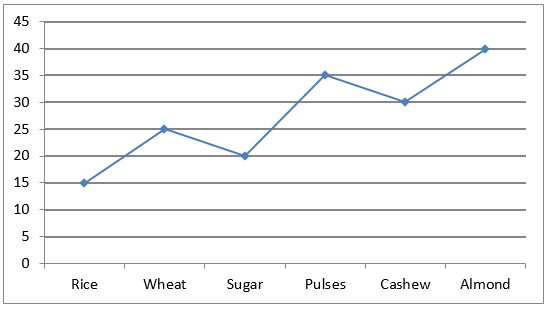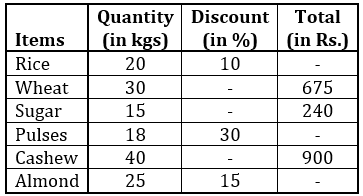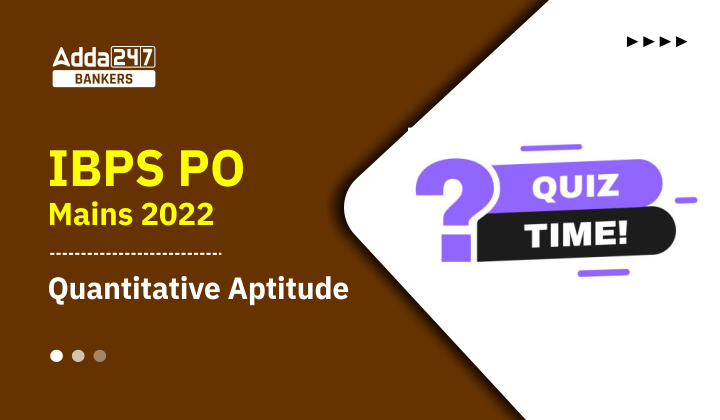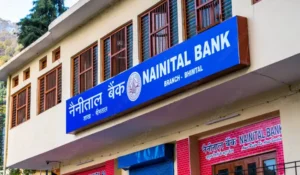Directions (1-5): An exam consists of 100 questions among 3 sections i.e. A, B and C. Section C have 32 questions and section A and B have equal number of questions. For each correct answer a student is awarded 3 marks and 1 mark is deducted for every wrong answer. Each section has 3 questions for which there is no negative marking on wrong attempt and 0.50 marks are deducted for every unattempted question.
Amar and Prem appeared for same exam, Amar attempted total 75 questions, while Prem attempted 80% of total questions attempted by Amar and 90% of his questions were correct. Both of them attempted all the question which do not have negative marking.
Q1. What is the smallest range of marks obtained by Amar, if 80% of his attempted questions were correct?
(a) 165-174
(b) 165-174
(c) 152.5-161.5
(d) 165-180
(e) 155-165
Q2. If only 3 non-negative marking questions out of 9 were wrong for Prem. Find the score of Prem.
(a) 122
(b) 102
(c) 159
(d) 139
(e) None of these
Q3. Prem attempted all the questions of section A, which were all correct and 50% of questions section C in which 6 were incorrect carrying negative marking. Find the difference between his score from section C and section B.
(a) 03
(b) 02
(c) 14
(d) 06
(e) None of these
Q4. All the non-negative marking questions were correct for Amar and only non-negative marking questions were wrong for Prem. What is the difference between their score, If 80% of questions attempted by Amar were correct.
(a) 10.5
(b) 16.5
(c) 54.5
(d) 36.5
(e) 17.5
Q5. If Amar scored 108.5 and 5 of his non-negative marking questions were correct. What is the total number of his correct questions?
(a) 42
(b) 53
(c) 47
(d) 49
(e) None of these
Directions (6-10): Study the graph and table given below and answer the following questions. The line graph shows the listed price per kg of various items in a wholesale store.

The table given below shows the amount of items bought by a retailer from the wholesale store. The table also shows the discount % offered by the wholesaler on the list price and total cost incurred by the retailer.

Q6. Calculate the profit earned by retailer on selling 20 kgs of wheat purchased by him to a customer at a discount of 5% on the listed price ?
(a) Rs. 25
(b) Rs. 45
(c) Rs. 75
(d) Rs. 50
(e) None of these
Q7. The retailer sold all the cashew bought by him to a customer at a price 25% more than the listed price. Calculate his overall profit percent.
(a) 33.33%
(b) 66.66%
(c) 55.55%
(d) 42.64%
(e) 77.77%
Q8. If 50% of the rice bought by the retailer got spoiled, then at what price/kg must he sell the remaining amount of rice to be at a situation of no loss-no gain ?
(a) Rs. 40
(b) Rs. 19
(c) Rs. 27
(d) Rs. 22
(e) None of these
Q9. The retailer sold all the pulses he bought at a price that is 30% more than the listed price and offered 2 kgs of Almond free with it. Find overall profit% of the retailer in this bargain ? (approximate)
(a) 50%
(b) 40%
(c) 35%
(d) 61%
(e) 45%
Q10. The retailer mixed 6 kgs. of impurity (free of cost) with all the sugar he had and sold the mixture at a discount which is 25% less than that discount (in percentage) offered by the wholesaler. Find the profit % on the sale of all of the amount of this mixture?
(a) 52.50%
(b) 46.15%
(c) 48.75%
(d) 57.50%
(e) None of these
Solutions






 Profit, Loss & Discount – Concept + ...
Profit, Loss & Discount – Concept + ...
 Nainital Bank Recruitment 2025-26 Notifi...
Nainital Bank Recruitment 2025-26 Notifi...
 Daily Current Affairs Quiz 13 December 2...
Daily Current Affairs Quiz 13 December 2...








